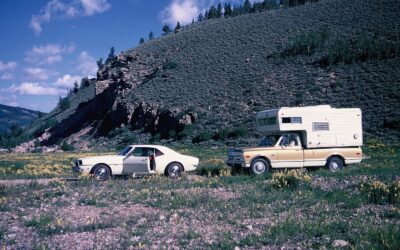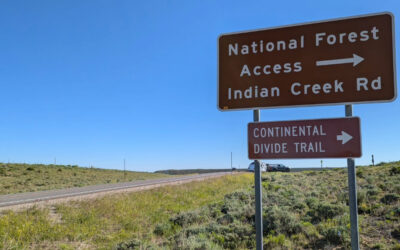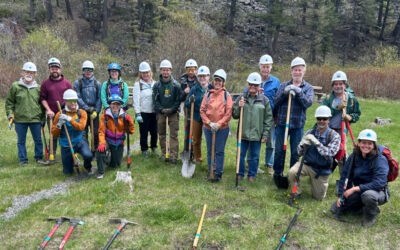The Continental Divide Trail (CDT) unites us. From Gateway Community residents to thru-travelers, and everyone in between, our diverse community is connected by our mission to protect the CDT. We are showcasing stories of the people and places that make up our community with our series, Voices of the CDT. Each month, look out for new stories that highlight these diverse experiences, histories, and faces, against the backdrop of the awe-inspiring Continental Divide.
INTERESTED IN SHARING YOUR CONNECTION TO THESE LANDSCAPES? SEND US YOUR STORY AT [email protected] FOR A CHANCE TO BE FEATURED!
A distinguished career with the National Park Service
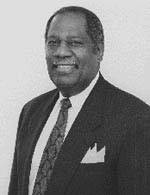
Throughout his career, Stanton has received numerous awards such as the Department of Interior’s highest award, the Distinguished Service Award
The Continental Divide Trail’s winding path meanders through 4 different National Park Service sites including Rocky Mountain National Park, Glacier National Park, Yellowstone National Park, and El Malpais National Monument. Additionally, the CDT passes around the outskirts of the stunning Grand Teton National Park which sits just south of Yellowstone and is known for its breathtaking and jagged mountains.
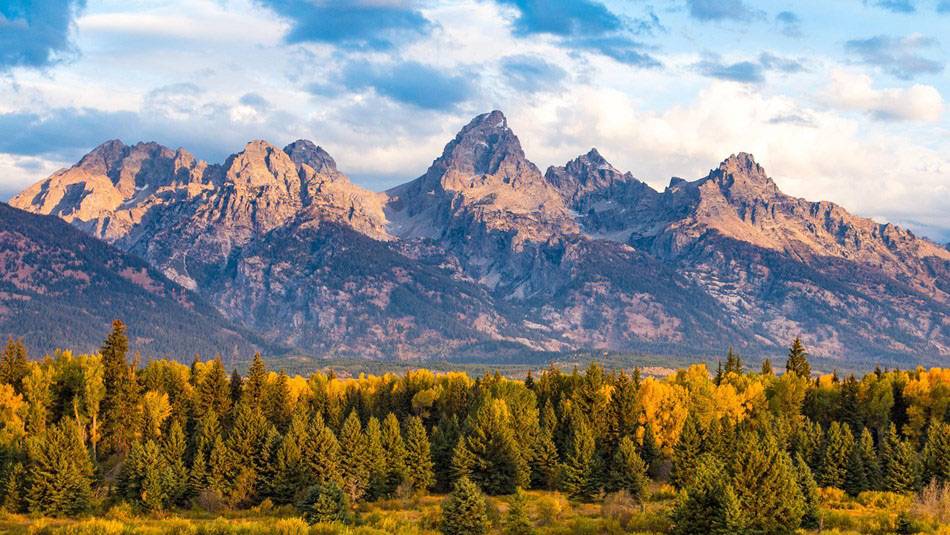
Grand Teton National Park was the setting of Robert G Stanton’s first experience with the National Park Service. Robert G Stanton started his journey with the National Park Service after being chosen as a summer seasonal park ranger in Grand Teton in 1962. Following this appointment, he worked as a management assistant, park superintendent, deputy regional director, associate director, regional director, and director of the National Park Service.
Prior to this career in the National Park Service, Stanton grew up in Mosier Valley outside of Fort Worth, Texas, and received his Bachelor of Science degree from Huston-Tillotson College (now Huston-Tillotson University), a historically Black university in Austin, Texas. During this time, Stewart Udall became the Secretary of the Interior and was very unimpressed by the lack of diversity within the civil service workforce. To combat this, Udall sent recruiters to historically Black universities to recruit students for positions within the National Park Service. Stanton was one of five students selected from Huston-Tillotson for a position with the National Park Service. However, not all students selected for this program were able to go. They had to pay for their own transportation to the service site and uniforms which cost $230 in total. This cost was a huge barrier for many students to be able to work with the National Park Service and Stanton himself had to take out a loan. Despite the financial difficulties associated with arriving at Grand Teton National Park, Stanton’s first career move led to a full career with the National Park Service.
In an interview in 2006 Stanton said that he could not have had a better introduction or experience with the National Park Service than he did during his time in Grand Teton in 1962. This positive experience was driven by the highly professional and caring staff with high levels of integrity. He found mentors in many of them. Additionally, in his free time he worked in Grand Teton at a ranch where he met a woman who was a partial owner of the ranch. Her name was Elises S Undermyer and she was the one who suggested that Stanton consider going into the National Park Service for his full time career. This turned out to be wonderful advice.
Throughout his career, Stanton has received numerous awards such as the Department of Interior’s highest award, the Distinguished Service Award. He was also awarded three honorary doctorate degrees to acknowledge his expertise and far-reaching impact across the National Park Service.
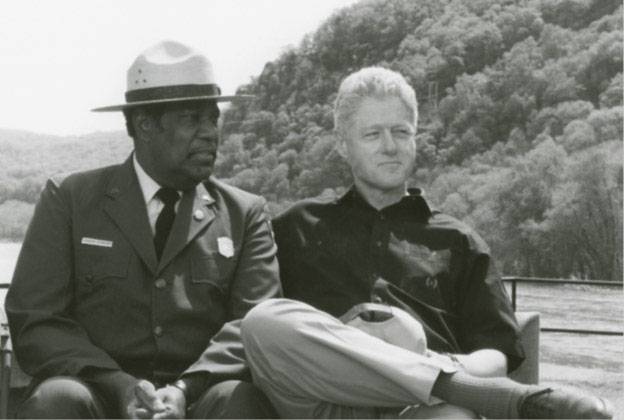
“Grand Teton will always be a favorite”
When Stanton was asked about his favorite National Park in an interview with The Trust for Public Land he said “Grand Teton will always be a favorite” but he also loves the other national parks that are related to African American history, such as the home of Frederick Douglass in D.C. In this interview, he also said that he loves the National Parks because they both show how we have grown as a country, and represent historical events such as Brown vs. Board of Education. He also says he loves how National Parks help to teach us to respect the land and other species that occupy it. In their diversity, he said, our nation’s parks also teach us that there is a great variety of points of view in the country and that many of us come from different backgrounds.
Robert G Stanton has been a great influence on the National Park Service and National Public Lands in general. We at CDTC greatly appreciate the work of all those who help to manage, maintain, and protect the beautiful and diverse landscapes the CDT traverses.
Sources:
https://www.nps.gov/parkhistory/online_books/director/stanton.pdf
https://www.tpl.org/magazine/conversation-robert-g-stanton-landpeople
Find out more about the life and work of Robert G Stanton at these resources.
The Trust for Public Land Interview
National Park Service Oral History Interview with Robert G Stanton

